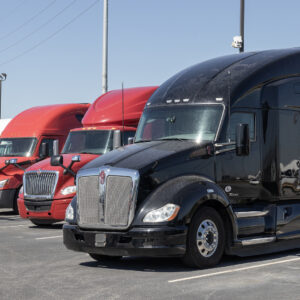New products come to the market regularly, and consumers have come to expect significant testing and safeguards, especially for products that can affect public safety, such as new life-saving drugs or advancements in airplane technology. Before these are made available, they must be proven safe. And for good reason — a new product can have catastrophic effects regardless of the intentions.
This is why law enforcement nationwide is concerned with legislation under consideration in Congress that would allow bigger trucks on our roads. Some bills would dramatically increase the allowable weight of semi-trailer trucks that have already been approved by the House Transportation & Infrastructure Committee. And there continues to be talk of allowing even longer double-trailer trucks.
One proposal would create a 10-year “pilot project” allowing 91,000-pound trucks — five and a half tons heavier than today’s limits. The goal: to see how many of these trucks are involved in crashes and to report the number of injuries and deaths. The usual years of data analysis and testing? Not for these 91,000-pound behemoths. The goal is to skip the typical due diligence and put them on roads immediately across America. Motorists become the guinea pigs in this experiment, with lives on the line.
The country is in the throes of a disturbing trend in road safety. The Fatality Analysis Reporting System, considered the most complete and accurate crash dataset, shows 5,866 fatalities in crashes involving large trucks in 2021, the most recent year with data available. This is a 17.2 percent increase compared to the previous year and the most in a single year since 1980. Opening our highways to an experimental 10-year “pilot project” given these trends would make addressing these public safety challenges more difficult.
But don’t take my word for it.
In 2016, the Department of Transportation weighed in on the safety of the issue when it released its Comprehensive Truck Size and Weight Limits Study Final Report to Congress.
The report recommended against any increases in the size or weight of trucks. USDOT found serious safety problems, finding a 47 percent to 400 percent higher crash rate for heavier trucks when compared to standard 80,000-pound trucks in limited state testing. Heavier trucks were found to have a higher out-of-service violation rate and an 18 percent higher brake violation rate when compared to 80,000-pound trucks.
Not a single product on the market would be released to the public with such a terrible track record.
There are better ways to collect data on heavier or longer trucks than exposing motorists to dangers. USDOT and the Transportation Research Board, a division of the National Academy of Sciences, Engineering and Medicine, gave specific recommendations to collect comprehensive data, including conducting off-road operational tests. If proponents are serious about genuine results and not a backdoor way to increase truck size or weight, they would embrace the USDOT and TRB recommendations and not support turning motorists into guinea pigs.
Congress should reject heavier and longer trucks and oppose experimenting with the lives of motorists.


